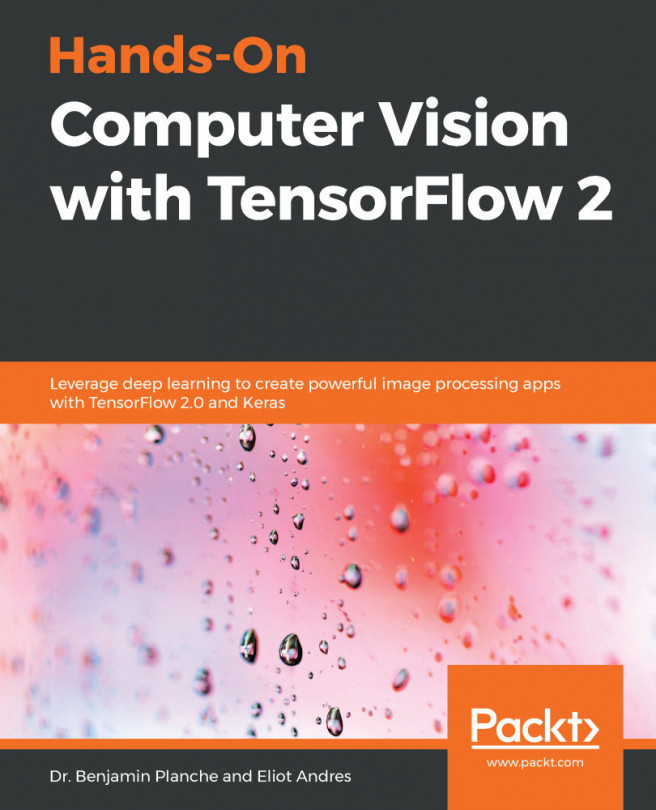Keras deep learning library overview
Keras is a high-level deep neural networks API in Python that runs on top of TensorFlow, CNTK, or Theano.
Here are some core concepts you need to know for working with Keras. TensorFlow is a deep learning library for numerical computation and machine intelligence. It is open source and uses data flow graphs for numerical computation. Mathematical operations are represented by nodes and multidimensional data arrays; that is, tensors are represented by graph edges. This framework is extremely technical and hence it is probably difficult for data analysts. Keras makes deep neural network coding simple. It also runs seamlessly on CPU and GPU machines.
A model is the core data structure of Keras. The sequential model, which consists of a linear stack of layers, is the simplest type of model. It provides common functions, such as fit(), evaluate(), and compile().
You can create a sequential model with the help of the following lines of code:
from keras.models import Sequential
#Creating the Sequentialmodelmodel = Sequential()Layers in the Keras model
A Keras layer is just like a neural network layer. There are fully connected layers, max pool layers, and activation layers. A layer can be added to the model using the model's add() function. For example, a simple model can be represented by the following:
from keras.models import Sequential
from keras.layers.core import Dense, Activation, Flatten
#Creating the Sequentialmodelmodel = Sequential()
#Layer 1 - Adding a flatten layer
model.add(Flatten(input_shape=(32, 32, 3)))
#Layer 2 - Adding a fully connected layer
model.add(Dense(100))
#Layer 3 - Adding a ReLU activation layer
model.add(Activation('relu'))
#Layer 4- Adding a fully connected layer
model.add(Dense(60))
#Layer 5 - Adding an ReLU activation layer
model.add(Activation('relu'))Keras will automatically infer the shape of all layers after the first layer. This means you only have to set the input dimensions for the first layer. The first layer from the preceding code snippet, model.add(Flatten(input_shape=(32, 32, 3))), sets the input dimension to (32, 32, 3) and the output dimension to (3072=32 x 32 x 3). The second layer takes in the output of the first layer and sets the output dimensions to (100). This chain of passing the output to the next layer continues until the last layer, which is the output of the model.














































































